What's New
Displaying results 1481 - 1490 of 4907
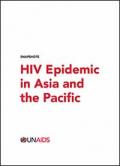
Resource | Reviews and Snapshots,
UNAIDS Snapshot 2018: HIV epidemic in Asia and the Pacific is an interactive report with colourful infographics and bite-size information on the HIV epidemic and response on key populations at higher risk of HIV in Asia and the Pacific.

Resource | Presentations,
This provides information on HIV epidemiology, invesments on AIDS, Quezon City response, challenges, successes, and outcomes of the UN Development Assistance Framework (UNDAF) in the Philippines.
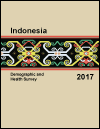
Resource | Publications,
The 2017 IDHS provides a comprehensive picture of population, family planning, reproductive health, and maternal and child health conditions in Indonesia. The primary objective is to provide current estimates of basic indicators in demography and health. The target population is women age 15-49, currently married men age 15-54, and never-married women and men age 15-24. The survey covered all 34 provinces in Indonesia. Information collected in the survey includes social and economic background characteristics of the respondents, fertility, contraceptive use, antenatal and postnatal care, childhood immunization, child health and nutrition, marriage and sexual activity, fertility preferences, knowledge of HIV/AIDS, and other health issues.
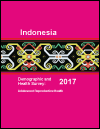
Resource | Publications,
The 2017 IDHS provides an overall overview on current conditions related to population, family planning, reproductive health, and other health issues. One of the important issues collected in the 2017 IDHS is the information about Adolescent Reproductive Health (ARH). The ARH information includes data of knowledge, attitudes, and adolescent practices toward human reproduction system, the use of cigarette and drugs, alcohol consumption, sexual intercourse, HIV AIDS and other sexually transmitted diseases.
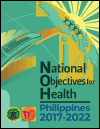
Resource | Publications,
The National Objectives for Health (NOH) 2017–2022 serves as the medium-term roadmap of the Philippines towards achieving universal healthcare (UHC). It specifies the objectives, strategies and targets of the Department of Health (DOH) FOURmula One Plus for Health (F1 Plus for Health) built along the health system pillars of financing, service delivery, regulation, governance and performance accountability. This ultimately leads to the three major goals that the Philippine Health Agenda aspires for: (1) better health outcomes with no major disparity among population groups; (2) financial risk protection for all especially the poor, marginalized and vulnerable; and (3) a responsive health system which makes Filipinos feel respected, valued and empowered.
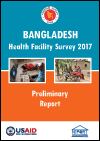
Resource | Publications,
The 2017 Bangladesh Health Facility Survey (BHFS) is the fourth nationally representative health facility survey in Bangladesh and follows earlier surveys in 2009, 2011, and 2014. The focus is on formal health sector facilities: public, private (at least 20 beds), and nongovernmental.
The 2017 BHFS provides information on the availability and readiness of services for maternal, newborn, and child health; family planning services; selected non-communicable diseases, including diabetes and cardiovascular disease; and tuberculosis. Information was collected from 1,524 health facilities and 5,400 health providers.
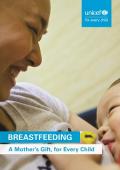
Resource | Publications,
Breastfeeding is among the most effective ways to protect maternal and child health and promote healthy growth and optimal development in early childhood.
This report from UNICEF shares new analysis on breastfeeding practices around the world and sets out key recommendations for governments, the private sector, civil society and communities in low-, middle- and high-income countries to increase breastfeeding rates. The report finds that more than 1 in 5 babies in high-income countries are never breastfed, compared to 1 in 25 in low- and middle-income countries.
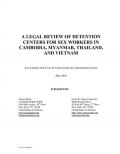
Resource | Laws and Policies,
At the request of Asia Catalyst, the Cyrus R. Vance Center for International Justice worked with two law firms and four local offices of these law firms to conduct a literature review on the legal provisions governing police arrests and compulsory detention of sex workers in Cambodia, Myanmar, Thailand, and Vietnam. Based on extensive research on the laws, regulations, and procedures available.
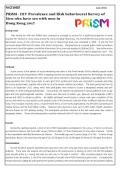
Resource | Fact Sheets,
Men having sex with men (MSM) have continued or emerged to account for a significant proportion of newly acquired HIV infection in many areas around the world, including Hong Kong. The first PRiSM (HIV prevention and risk behavioural survey of men who have sex with men in Hong Kong) study was conducted in 2006. It was the first community-based MSM and HIV study of its kind in Hong Kong. Designed also as a regular public health surveillance programme to track the epidemic and inform intervention, the survey was repeated in 2008 and 2011. Special Preventive Programme of the Department of Health (DH) conducted this fourth round of PRiSM from April to September 2017. The study aims to update on the HIV prevalence among MSM in Hong Kong, and inform on HIV/STIs preventive interventions and the profile of risk behaviours of local MSM.
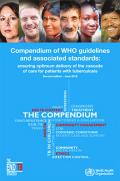
Resource | Guidelines,
The Compendium has been developed as a clear and concise instrument to facilitate the understanding and planning of delivery of high-quality care for everybody affected by TB. It incorporates all recent policy guidance from WHO; follows the care pathway of persons with signs or symptoms of TB in seeking diagnosis, treatment and care; and includes key algorithms and cross-cutting elements that are essential to a patient-centered approach in the cascade of TB care.





